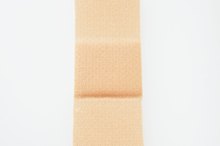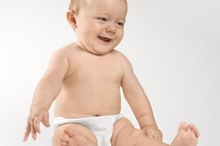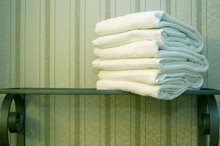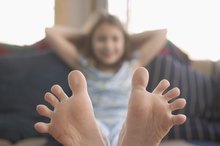What Are the Treatments for Toddlers With Blisters?
Blisters, a raised pouch of skin filled with fluid, are typically the result of friction on your toddler's skin, but they're also sometimes a side-effect of severe diaper rash and other contact-related dermatitis. Not only are blisters painful, but they're virtual magnets for germs and bacteria, leading to infection. If your toddler has a blister, most treatments involve keeping the sore clean, dry and covered until it heals on its own.
Infection Prevention
Blisters, when broken, are especially susceptible to infection 1. The open skin allows germs and bacteria to penetrate the surface of the skin, so it's vital that you keep the blister clean and dry. While fresh air typically helps to heal a blister, if your toddler picks at the blister, he makes it worse. Discourage picking by placing a clean bandage over the blister. Change the bandage frequently, especially after getting wet because moisture slows the healing process. If your child complains of soreness, apply a thin layer of petroleum jelly over the blister before adhering the bandage.
- Blisters, when broken, are especially susceptible to infection 1.
- The open skin allows germs and bacteria to penetrate the surface of the skin, so it's vital that you keep the blister clean and dry.
Pain Relief
How Can I Make My Scratches Heal Fast?
Learn More
Blisters are often painful, especially for little ones who have a low pain tolerance. Whether the blister is the result of friction, such as the heel coming in contact with an uncomfortable shoe, or is the result of diaper rash, blisters might feel hot or create a stinging sensation. Offering ibuprofen or acetaminophen according to package directions both helps to relieve pain and reduce swelling, which could be exacerbating the soreness.
Creams and Ointments
If you notice your toddler's blister getting redder, oozing pus or becoming more tender, it's time to make an appointment with your pediatrician, While keeping the area clean and dry is the best treatment for an uncomplicated blister, antibacterial or antibiotic ointment is necessary when the blister isn't healing on its own. Special ointments and creams are unnecessary for unpopped blisters unless prescribed by your child's pediatrician, while a popped blister benefits from a daily application of antibacterial ointment.
Blister Prevention
My Three-Year-Old Has Itchy Skin
Learn More
As with a variety of skin conditions, blister prevention is often the most effective treatment. Before giving your toddler new shoes, check to see that there aren't any uncomfortable bumps or ridges which could cause excessive pressure on your child's skin. Check for irritating tags on the inside of shirts and pants as well. If your toddler's blisters are the result of a serious diaper rash, change him frequently to avoid his skin being on contact with a wet diaper for long periods of time and use a zinc oxide-based diaper cream to create a barrier between moisture and your toddler's skin.
- As with a variety of skin conditions, blister prevention is often the most effective treatment.
- If your toddler's blisters are the result of a serious diaper rash, change him frequently to avoid his skin being on contact with a wet diaper for long periods of time and use a zinc oxide-based diaper cream to create a barrier between moisture and your toddler's skin.
Related Articles
References
- "1,801 Home Remedies: Trustworthy Treatments for Everyday Health Problems"; Reader's Digest; 2004
- Shashikumar B, Reddy RR, Harish M. Oral hemorrhagic blister: an enigma. Indian J Dermatol. 2013;58(5):407. doi:10.4103/0019-5154.117337
- Worthing RM, Percy RL, Joslin JD. Prevention of Friction Blisters in Outdoor Pursuits: A Systematic Review. Wilderness Environ Med. 2017;28(2):139-149. doi:10.1016/j.wem.2017.03.007
- Harvard Health Publishing, Harvard Medical School. Frostbite 404 404.
- Institute For Preventive Foot Health. Causes of Blisters.
- PathologyOutlines.com. Skin - nontumor, Blistering disorders, Blood blister.
- U.S. National Library of Medicine, Medline Plus. Blisters.
Writer Bio
Kay Ireland specializes in health, fitness and lifestyle topics. She is a support worker in the neonatal intensive care and antepartum units of her local hospital and recently became a certified group fitness instructor.









